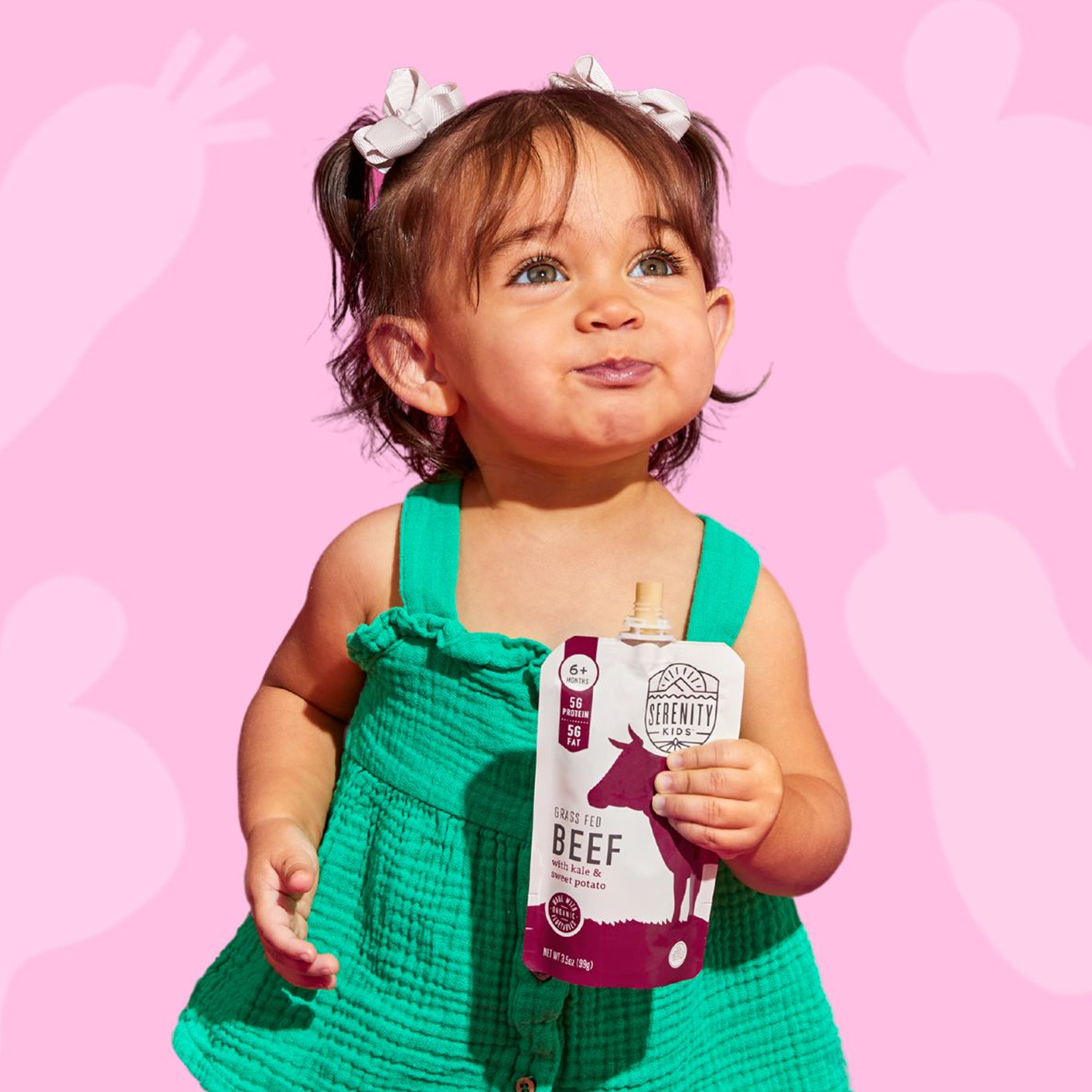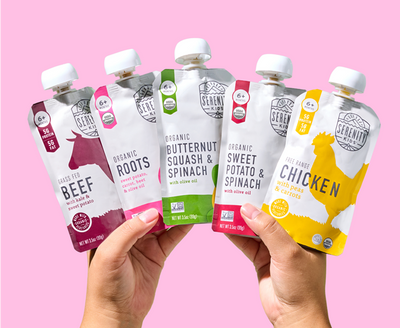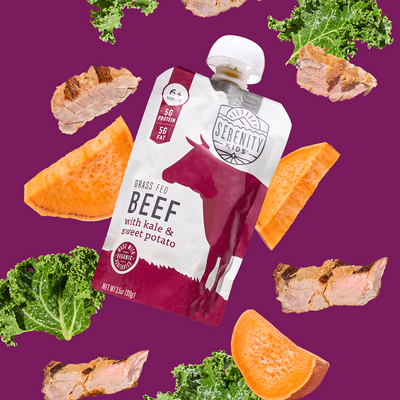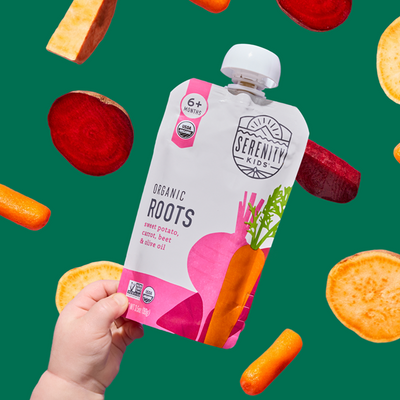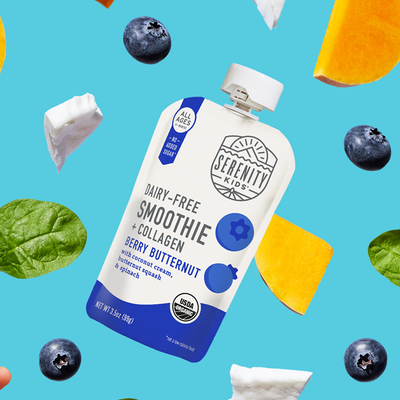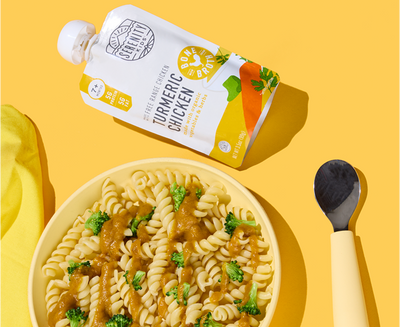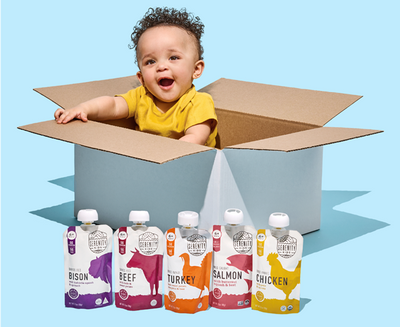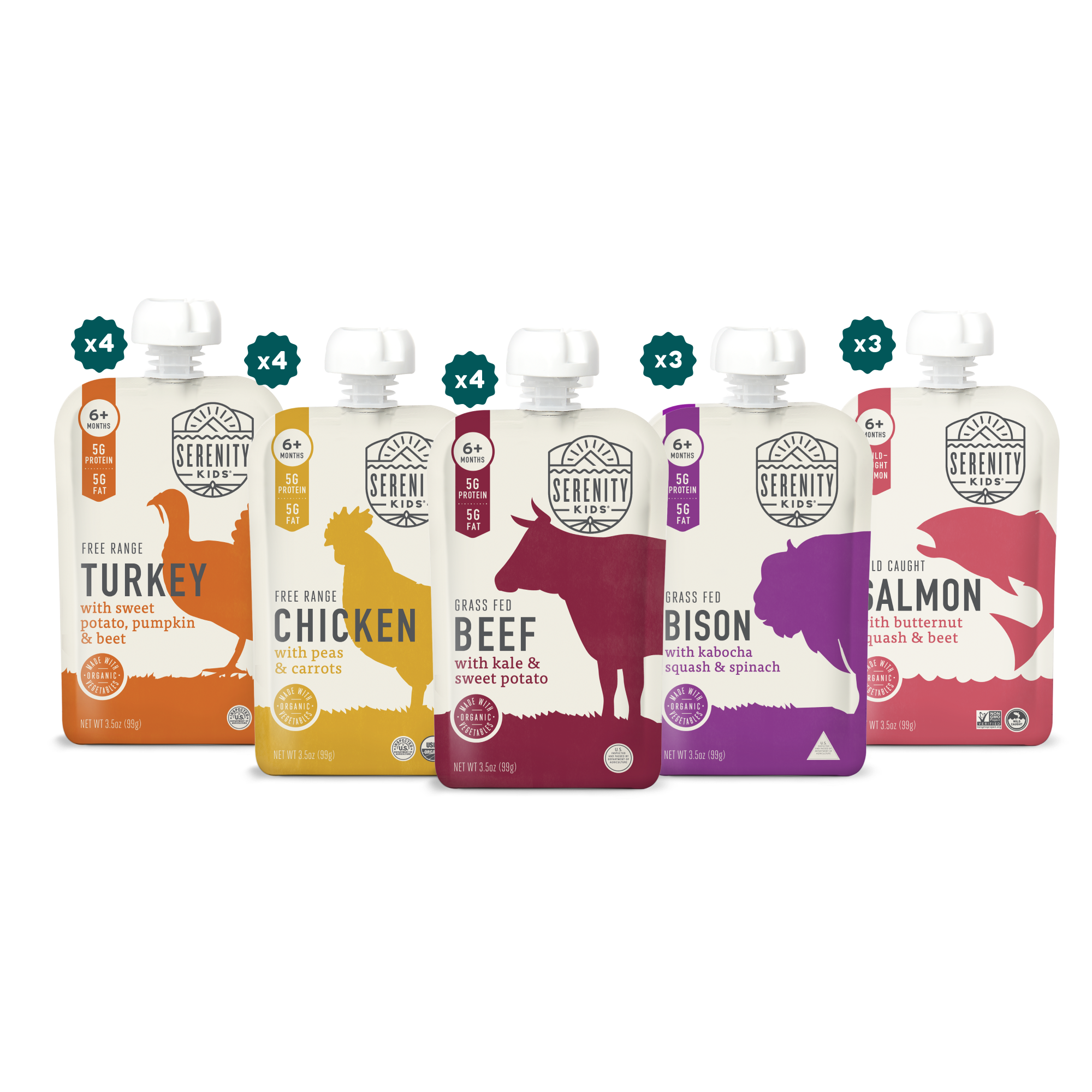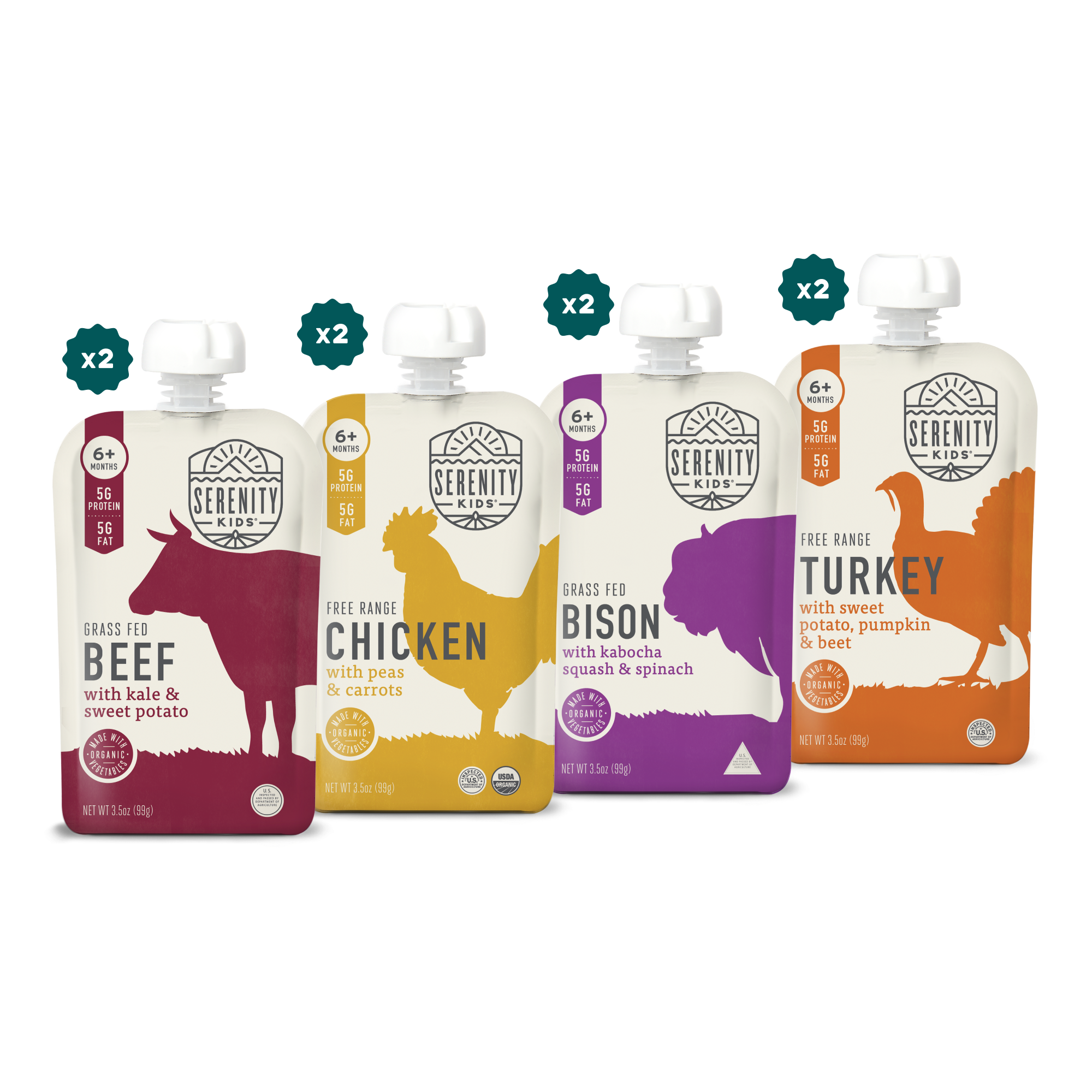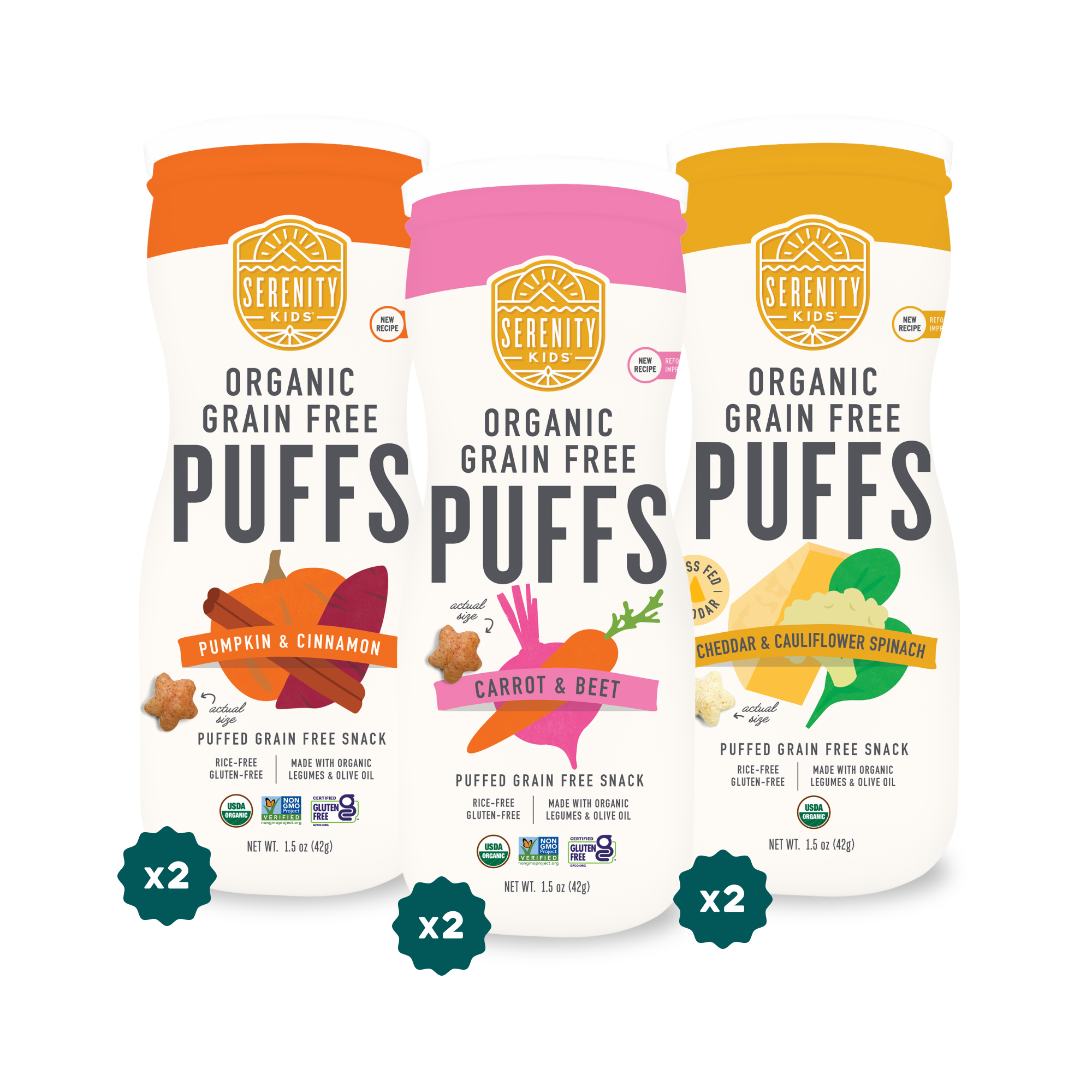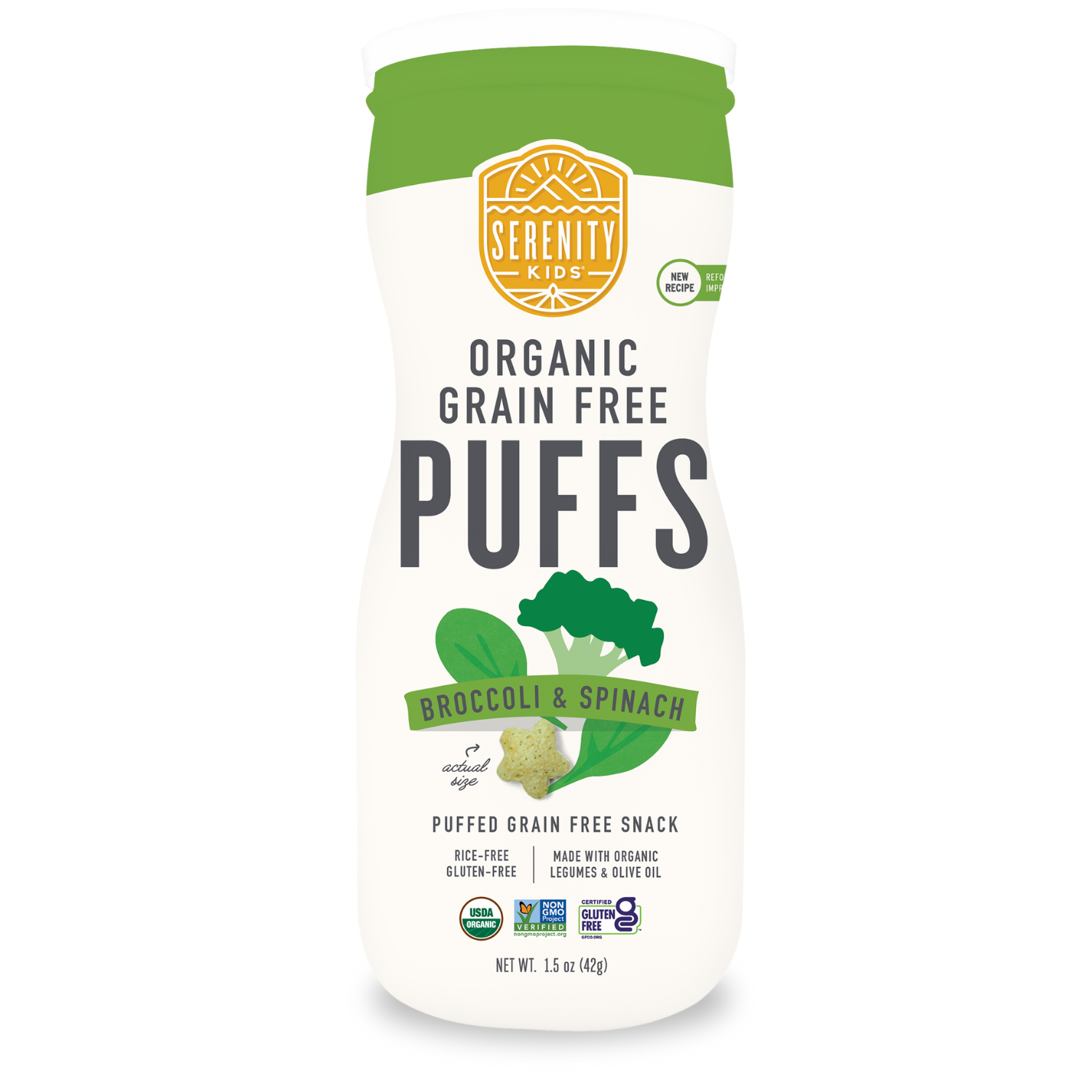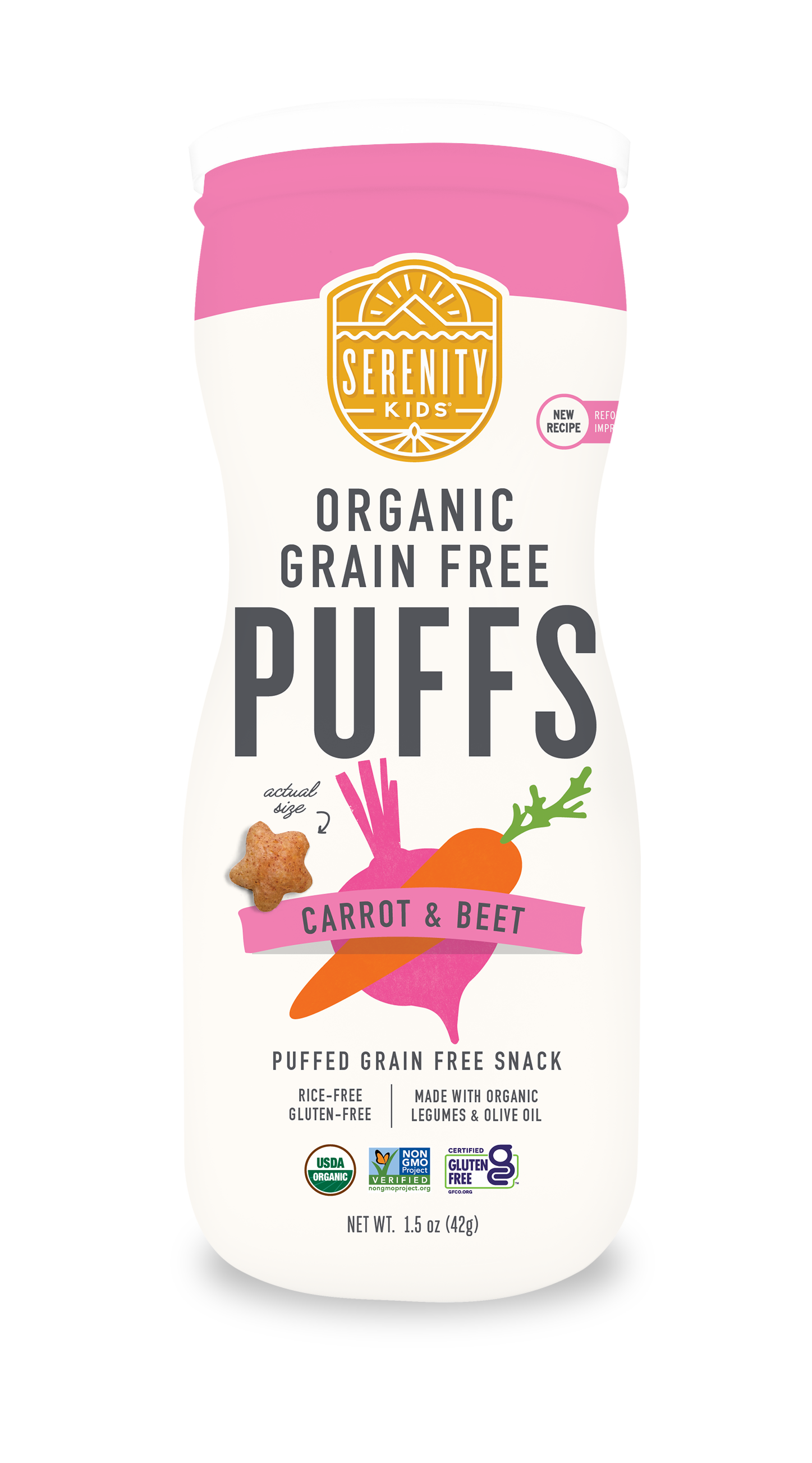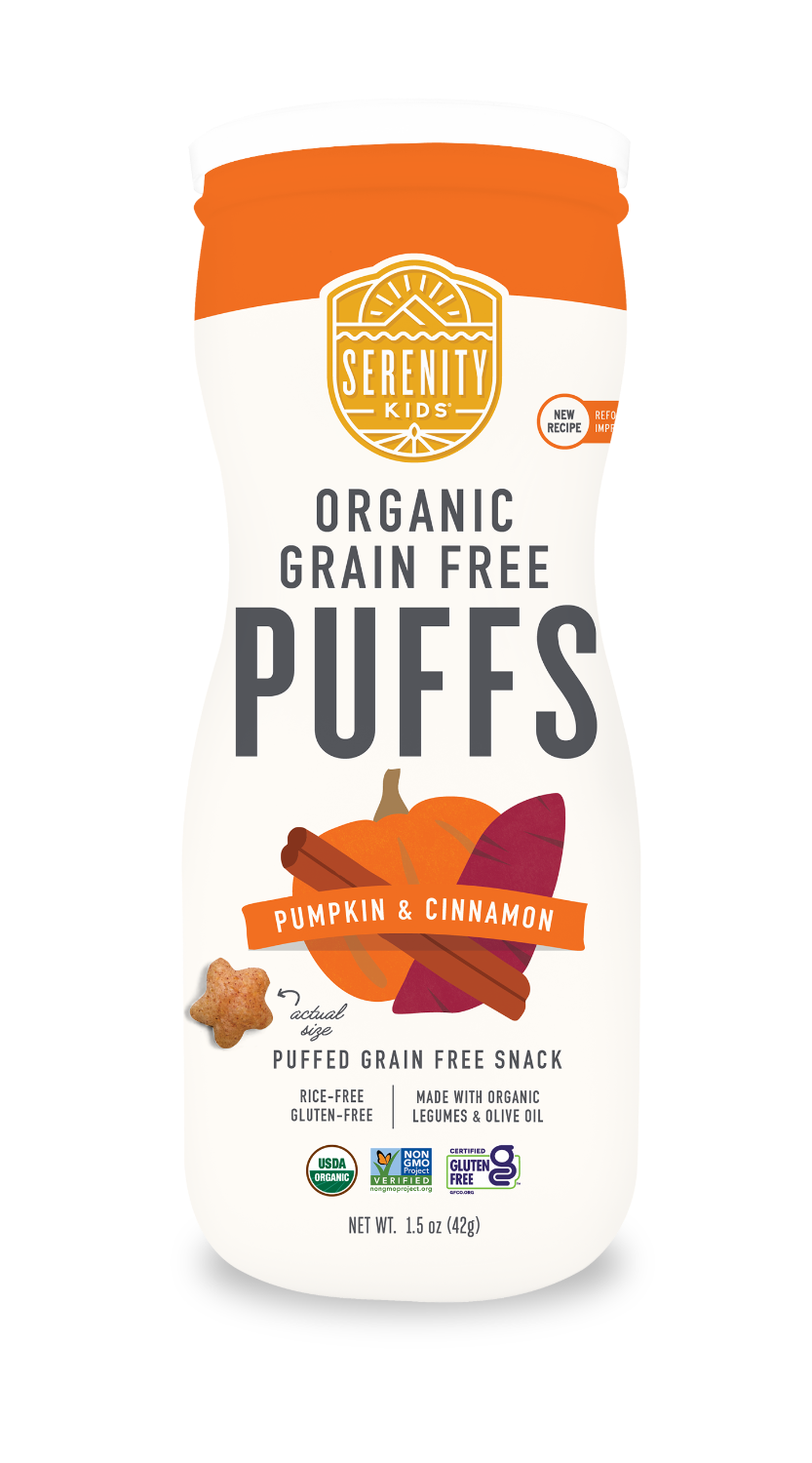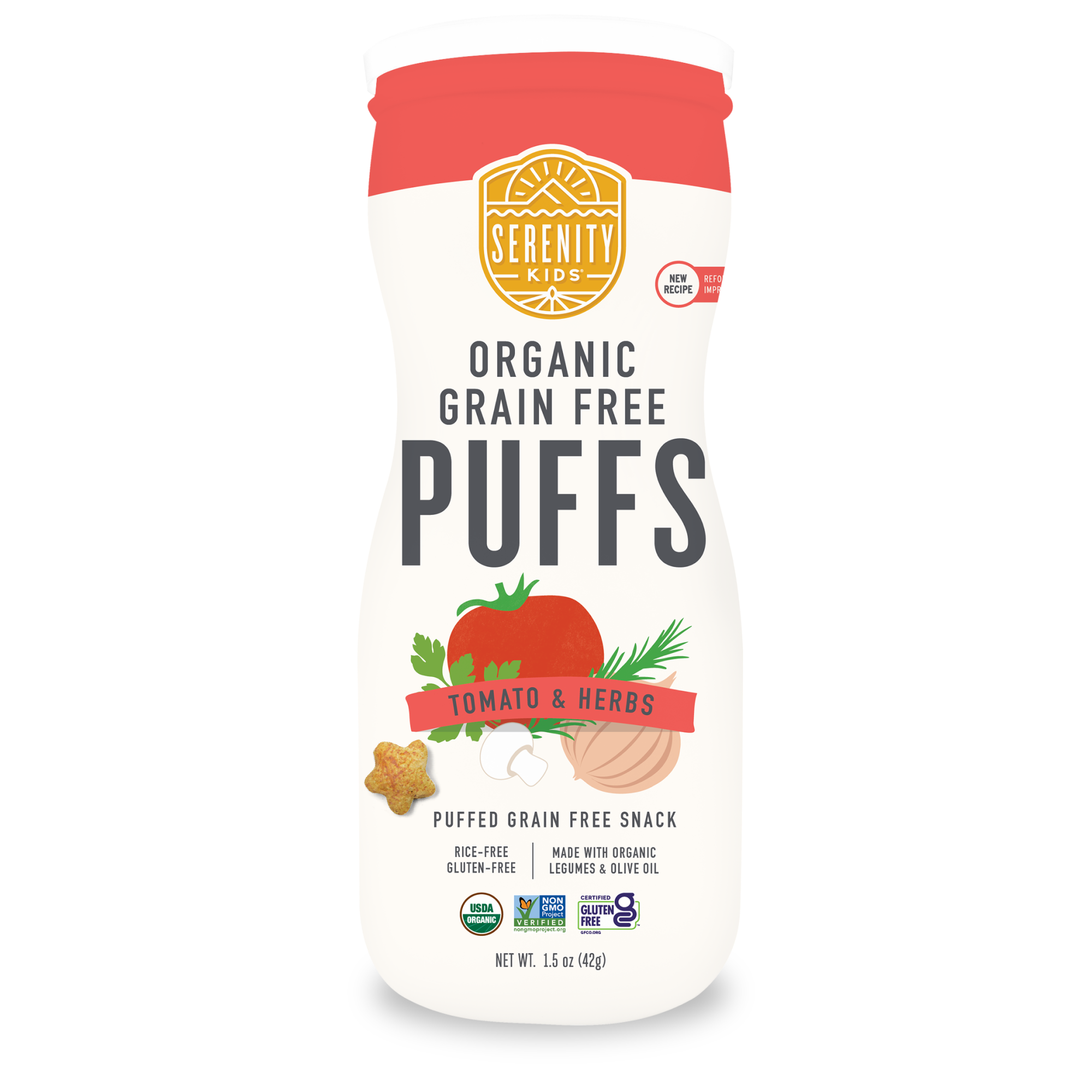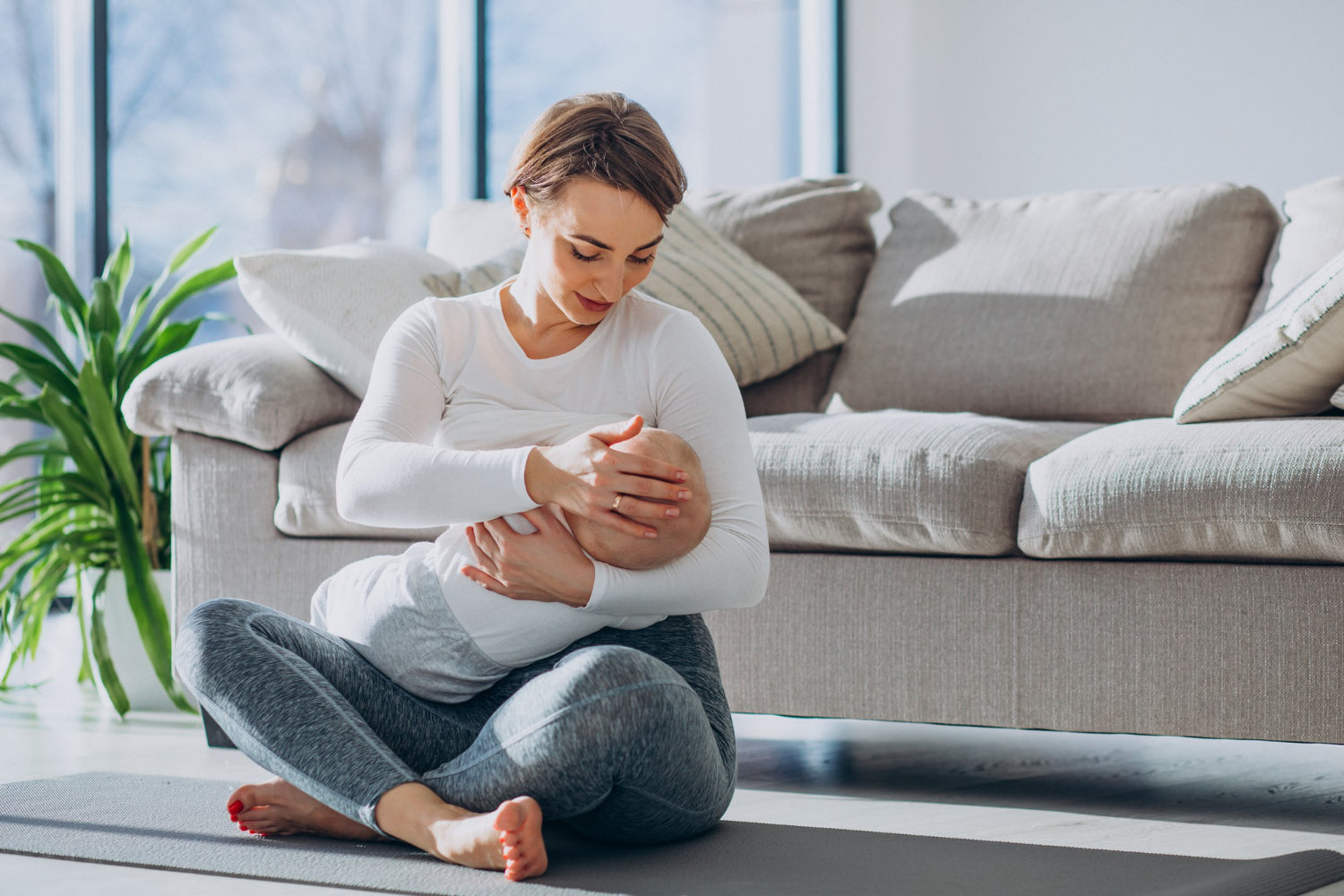TABLE OF CONTENTS
Written by Hillary Bennetts
May 02, 2022
When Can Babies Have Meat? Benefits of Introducing Meat to Your Baby’s Diet
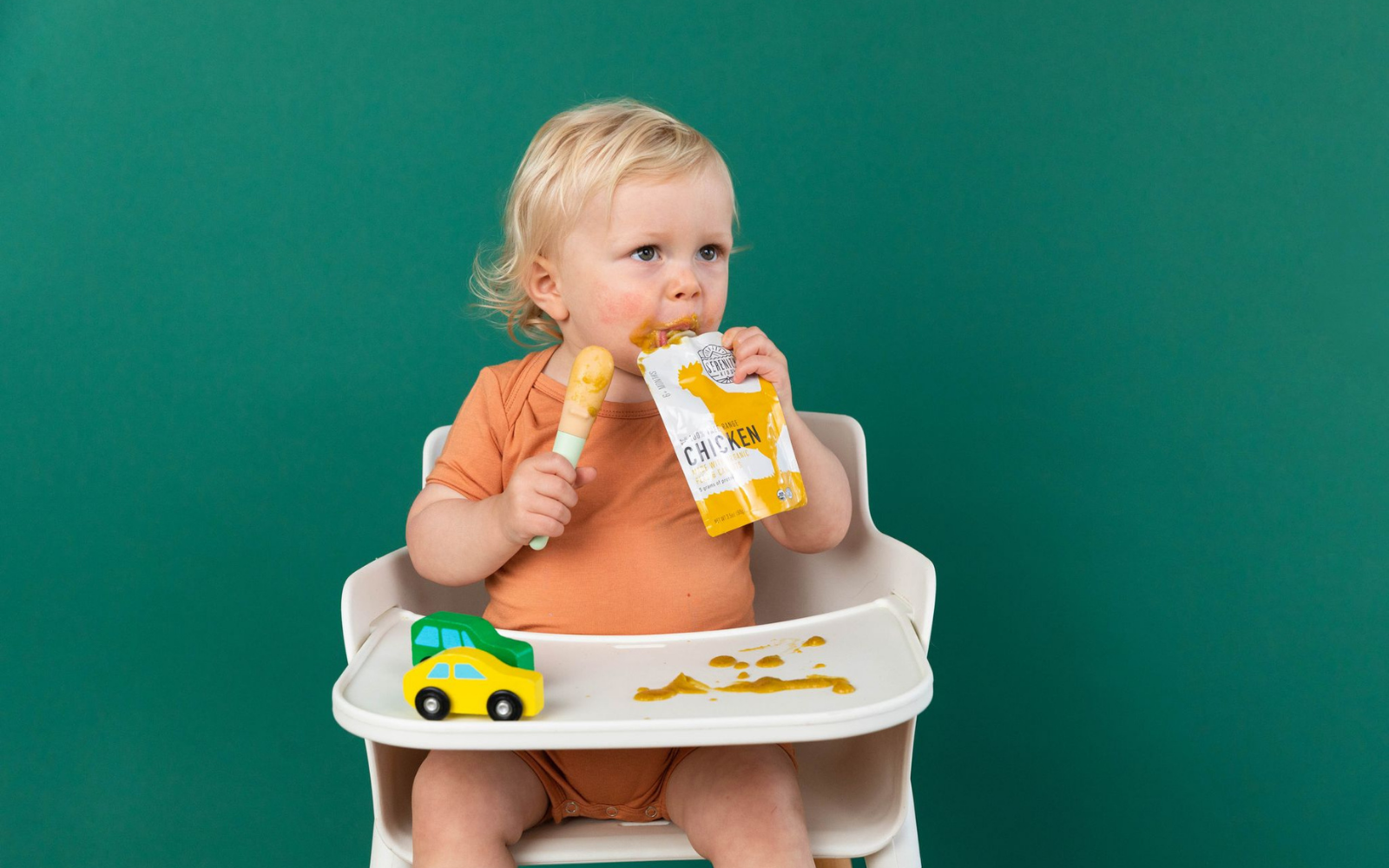
For the first six months of your baby’s life, all of their nutrition comes from either breast milk, formula, or a combination of both. While you were probably excited and anxiously waiting for your little one to show signs that they are ready to begin solids, you may be feeling a little overwhelmed now that they are finally ready.
You may find yourself wondering what their first foods should be and when you can offer them certain foods, like meat. Although meat may seem a little intimidating at first, it’s packed with complete protein, vitamins, antioxidants, and key nutrients that are crucial for your baby’s growth—and it’s actually easier for your baby to digest than any other food group.
In this article, we'll explore the nutritious benefits of feeding your baby meat, tips for introducing it to your baby, how to prepare it according to their age, and the potential risks associated with feeding it to your baby. We'll also provide delicious, baby-friendly meat recipes and discuss meat alternatives.
All you need to know about giving meat to a baby
While meat is generally included in a healthy, well-balanced diet, it’s especially important for babies as they grow. Foods like pasture-raised beef, turkey, chicken, pork, and fish are some of the best sources for bioavailable vitamins and nutrients, such as zinc and iron, which help strengthen their immune system and reinforce brain development. Meat is recognized as one of the most nutrient-dense foods on the planet, making it an ideal choice when Every Bite Counts®.
Meat is also the best source of high-quality protein, which plays an essential role in many bodily functions. It helps provide the body with energy, repair tissues, and develop organs properly — all of which are crucial for your baby’s growing body.
Is it healthy to give meat to a baby?
Once your baby is at least six months of age and has demonstrated the five main signs of readiness to begin eating solids, meat is a nutritious and delicious option for most babies. Because breastmilk is technically an animal product, a baby’s tummy contains all the enzymes necessary to digest meat and other animal products. In fact, they can digest animal products better than any other food group.
While the specific nutrition will vary depending on the type of meat you choose, offering your little one a variety of meats is a great way to incorporate different nutrients into your baby’s diet, while also taking advantage of the flavor window.
How can you choose and store meat for your baby?
In most cases, your baby should be able to eat most kinds of meat right off the bat. Introducing them to different types of meat will also offer a wider range of vitamins and nutrients. We recommend choosing high-quality, ethically sourced meat from regenerative agriculture whenever possible. (Fun fact: three of our meat purees are even Land to Market verified!)
Common meat options include:
- Chicken
- Pork
- Beef
- Goat
- Turkey
- Bison
- Fish
Your baby can also eat other types of meats, such as organ meats. Some common organ meats include:
- Liver, which is rich in vitamin A, folic acid, iron, and zinc (Check out our article on How to Make Liver Bone Broth, which is a great way to get your baby some extra nutrients)
- Heart, which is rich in iron, zinc, selenium, and folate
- Kidney, which contains omega 3 fatty acids
Although most babies can eat all types of meat, preparation and storage are important to ensure the safety of your little one. For example, purees, ground meat, and meatballs can be stored in the refrigerator for 1-2 days. On the other hand, meat strips, shredded meat, and meat on the bone will generally stay fresh 3-4 days.
What to avoid when introducing meat into a baby's diet?
Although you should aim to introduce your baby to a wide range of meats, there are several precautions that you should take to ensure your baby’s safety.
- Limit deli meats, hot dogs, and fried meats until 12 months. These processed meats are generally higher in preservatives and sodium.
- Avoid reheating meat more than once, when possible. Cooling and reheating food more than once can increase the potential for bacteria growth.
- Limit consumption of fish that are high in mercury, such as swordfish and king mackerel
- Ensure that you always give your baby fully cooked meat until 12+ months. This means the meat should reach a specified internal temperature, typically ranging from 145-165°F as designated by the FDA, based on the type of meat. It also shouldn’t be rare or medium-rare until 12+ months
How to introduce meat to a baby?
Once your baby has turned six months old and has met the five signs of readiness for starting solids, meat is a great food to use as the basis of their solid food diet. Meat tends to be coarser than many other foods, so you may have to slightly alter how you prepare it, based on the age of your child.
Experts generally suggest preparing purees or pre-chewing meat for younger babies, while shredded, ground, and cubed meats are usually acceptable for older babies and toddlers. This will help ensure that your child is getting the nutritious benefits of meat, regardless of their age.
Pre-chewing (called premastication) may sound gross and might not be for every parent, but is an excellent way to share the meat you're eating with your baby. In fact, the enzymes in your mouth actually aid in its digestion.
It’s important to pay attention to your child’s current development, such as how well they are able to chew, when deciding how to introduce meat into their diet.
How can you prepare healthy, delicious meat for a baby according to age?
While we love the Baby-Led Introduction to Solids (BLISS) method, which combines both purees and baby-led weaning, you may choose to follow a more traditional approach when you prepare meat for your baby. This generally consists of starting with purees and working up to small pieces of food as they get older and better at chewing.
To learn more about the BLISS method of introducing solids, visit our article on Introducing Solids: Why We Love Both Baby-Led Weaning and Purees.
Meat for a 6-old-month baby
Purees are a great option for many parents who don’t feel ready to give their baby coarser textures or meat prepared in other ways. Not only is there less risk of choking with purees, it may be easier to provide more nutrients and flavors to their diet.
Simply cook your chosen meat and puree it in a blender or food processor until it’s a smooth consistency. Add water or breast milk to thin as needed. You may find that your baby does better with thinner purees to start, but quickly learns to handle thicker consistencies.
If you don’t have time to make it yourself or aren’t interested in premastication, Serenity Kids Ethically Sourced Meats Variety Pack and Bone Broth Variety Pack are convenient and nutritious options for babies who aren’t quite ready to handle shredded or smaller cut meat.
Meat for a 9-month-old baby
As your baby gets older, they’ll be able to better handle chewing and digesting larger, solid pieces of food. This is a great time to begin giving your baby finger foods, like shredded or thinly sliced meat.
This will also help develop their motor skills, like the pincer grasp, as they learn to pick up food and bring it to their mouth. To learn more about the pincer grasp, visit our article one What is the pincer grasp and when do babies develop it.
Meat for toddlers
Once your child has shown that they can safely handle shredded meats, you can begin giving them smaller pieces of meat, like ground chicken or beef. By this time, their pincer grasp should be well-developed, making it easier for your little one to pick up the smaller pieces of finger food. They also likely have teeth coming through that will help chew up these smaller bite sized pieces.
Meat plays a crucial role as a primary protein source and provider of essential nutrients for toddlers. However, it is not uncommon for toddlers to experience a period of resistance towards consuming meat, which is often referred to as a "meat strike." If you're interested in learning more about this phenomenon and gaining helpful insights on dealing with toddlers refusing to eat meat, we recommend reading our article on "Tips for a Meat Strike".
Delicious meat recipes that will satisfy your baby’s palate
While babies can often just eat a version of whatever you’re having for dinner, here are some delicious meal ideas to help encourage your baby to eat meat.
Homemade uncured bacon baby food
Pork contains the fatty acids EPA and DHA, which are critical for normal brain development and function.
This homemade baby food recipe uses uncured bacon, ground pork, butternut squash, and spinach to provide your little one with a boost of vitamin D and vitamin E.
Visit our Homemade Bacon Baby Food Recipe.
Savory toddler pancakes
This recipe incorporates our 100% Grass-Fed Bison Food Pouch with Organic Kabocha Squash & Spinach with egg, ricotta cheese, and vegetables.
Visit our Savory Pancakes recipe.
Toddler-Approved Beef & Broccoli
We love that this recipe literally takes ten minutes or less (while still packing in balanced nutrition thanks to nutrient-dense ingredients).
This recipe incorporates our Beef Puree; check out the step-by-step process here.
Meatballs with mashed potato
This simple recipe combines ground beef with mashed potato to make a delicious meal for your baby. You could also opt for sweet potatoes or add herbs to give your baby a taste of different flavors, as well as added nutritional benefits.
For extra flavor and a boost of protein and amino acids, use our Turkey Bolognese with Bone Broth puree as a sauce for your meatballs. You could also use tomato sauce or season with mild chili powder for a different flavor.
Visit this Baby Meatballs Recipe.
Can meat be a hazard for a baby?
Like any other food, there are potential risks when it comes to incorporating meat into your child’s diet.
Can meat choke your baby?
Meat tends to be coarser and harder to chew than some of the softer foods. With that, meat could be a choking hazard if not prepared correctly, which is why you shouldn’t offer small cuts of meat to your baby before they are ready.
Feeding your baby foods that are prepared and cut age-appropriately will greatly reduce their risk for choking — although it won’t ever remove the risk completely. It’s also important to always put your child in a safe eating position and to keep a close eye on them while they are eating.
Is there a meat allergy?
Although food allergies are relatively common, meat allergies are extremely rare. In some cases, however, parents find that their child may have an allergic reaction to certain meats.
Common symptoms of a food allergy include:
- Hives or skin reaction
- Itching
- Sneezing
- Wheezing or trouble breathing
- Nausea, vomiting, or diarrhea
For parents concerned about allergies, it’s a common practice to introduce one food at a time in case your baby reacts to something they’ve eaten. This can help you identify possible food allergies.
When to get medical advice?
If your baby is showing any signs of an allergic reaction to something they’ve eaten, it’s important to consult a healthcare professional immediately. They will help treat your child and determine the underlying cause of the reaction.
They may recommend a skin prick allergy test, followed by blood work to identify specific allergens that may be affecting your little one. We aren’t health professionals so we always advise you to consult with yours.
So what’s the bottom line?
Starting your baby on solids can be a little nerve-racking, between navigating which foods are best and how to prepare them. Fortunately, babies can eat nearly everything that adults can eat, including meat. Not only is meat a nutritious option, there are many different ways to prepare it, making it an ideal first food for babies.
And for when you need an easy option for busy nights or days spent on-the-go, Serenity Kids has a variety of ethically-sourced meat purees ready to be enjoyed by your little one.
Written by Jennifer Wirth. Jennifer is a professional health writer, leveraging her scientific background as a Chemical Engineer to uncover the most interesting aspects of infant nutrition, pregnancy, and parenting. As a wife and mother of three young children, Jennifer is passionate about providing the best possible nutrition for her family. She believes that developing healthy eating habits early helps build the foundation for a long, fulfilling life.
You Might Also Like
· 1 min read · Recipes
· 7 min read · Education
